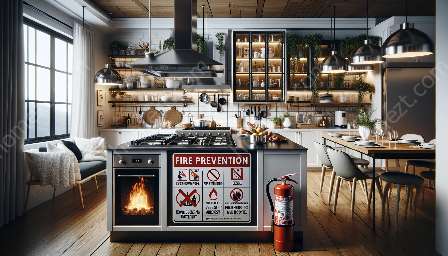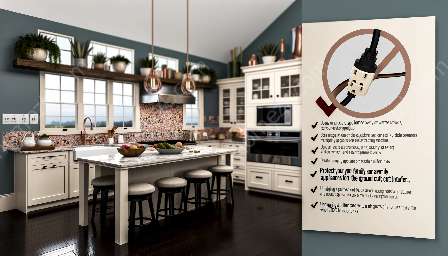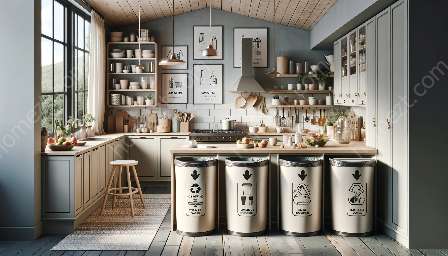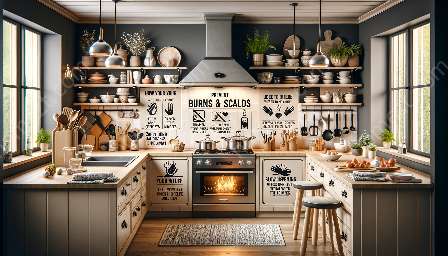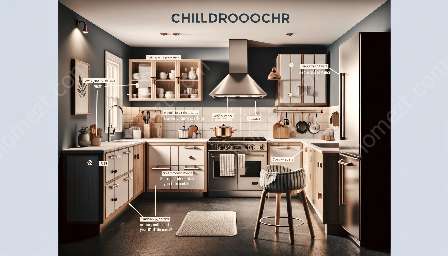Safe food preparation is essential for maintaining kitchen safety and ensuring a healthy dining experience. It encompasses a variety of practices, including proper food handling, storage, and cooking techniques. By understanding and implementing safe food preparation guidelines, you can protect yourself and your loved ones from foodborne illnesses and other potential hazards. In this comprehensive guide, we will explore the key aspects of safe food preparation, covering topics such as food hygiene, cross-contamination prevention, and the importance of maintaining a clean and organized kitchen environment.
Kitchen Safety and Safe Food Preparation
When it comes to safe food preparation, kitchen safety goes hand in hand. An organized and clean kitchen is the foundation for safe food handling and cooking. By following specific guidelines and best practices, you can reduce the risk of foodborne illnesses and create a secure environment for food preparation and storage.
Importance of Safe Food Handling
Safe food handling begins with proper handwashing and sanitation. Always wash your hands thoroughly with soap and water before and after handling food, especially raw meat, poultry, and seafood. Use separate cutting boards and utensils for raw and ready-to-eat foods to avoid cross-contamination. Additionally, ensure that all food preparation surfaces and equipment are cleaned and sanitized regularly.
- Wash your hands thoroughly before and after handling food.
- Use separate cutting boards for raw and ready-to-eat foods.
- Clean and sanitize food preparation surfaces and equipment regularly.
Food Hygiene and Storage
Proper food storage is crucial for preventing food spoilage and contamination. Store perishable items, such as meat, dairy, and eggs, in the refrigerator at a safe temperature. Be mindful of expiration dates and follow recommended storage guidelines to maintain the quality and safety of your food. Additionally, practice good food hygiene by washing fruits and vegetables before consumption and keeping the kitchen and dining areas clean and free of pests.
- Store perishable items in the refrigerator at a safe temperature.
- Check expiration dates and follow recommended storage guidelines.
- Wash fruits and vegetables before consumption.
Cooking and Temperature Control
Cooking food to the proper temperature is essential for eliminating harmful bacteria and ensuring its safety. Use a food thermometer to check the internal temperature of meat, poultry, and seafood to ensure that they are fully cooked. Leftovers should also be reheated to a safe temperature to destroy any potential pathogens. By practicing proper temperature control and cooking techniques, you can minimize the risk of foodborne illnesses.
- Use a food thermometer to check the internal temperature of meat, poultry, and seafood.
- Reheat leftovers to a safe temperature.
Maintaining a Clean and Organized Kitchen Environment
Aside from following specific food handling and cooking practices, maintaining a clean and organized kitchen is crucial for safe food preparation. Keep countertops, sinks, and utensils clean and free of food debris. Regularly clean and sanitize appliances, such as refrigerators, ovens, and microwaves. Properly store and label food items to minimize the risk of cross-contamination and spoilage.
Preventing Cross-Contamination
Cross-contamination occurs when harmful bacteria from one food item are transferred to another, leading to potential foodborne illness. To prevent cross-contamination, use separate cutting boards, utensils, and food storage containers for raw and ready-to-eat foods. Clean and sanitize surfaces and equipment that come into contact with raw food items to minimize the risk of bacterial transfer.
- Use separate cutting boards, utensils, and food storage containers for raw and ready-to-eat foods.
- Clean and sanitize surfaces and equipment to minimize the risk of bacterial transfer.
Importance of Personal Hygiene
In addition to maintaining a clean kitchen environment, personal hygiene plays a significant role in safe food preparation. Ensure that you and anyone handling food in the kitchen practice good personal hygiene, including proper handwashing, wearing clean attire, and avoiding food preparation when sick. By prioritizing personal hygiene, you can further reduce the risk of food contamination and foodborne illnesses.
- Practice proper handwashing and personal hygiene.
- Avoid food preparation when sick.
Conclusion
Safe food preparation is an ongoing commitment to creating a healthy and secure kitchen environment. By following the guidelines and best practices outlined in this comprehensive guide, you can significantly reduce the risk of foodborne illnesses and create a safe dining experience for yourself and your loved ones. Remember that safe food preparation is not only about following specific rules but also about fostering a mindset of mindfulness and awareness when handling, cooking, and storing food.

